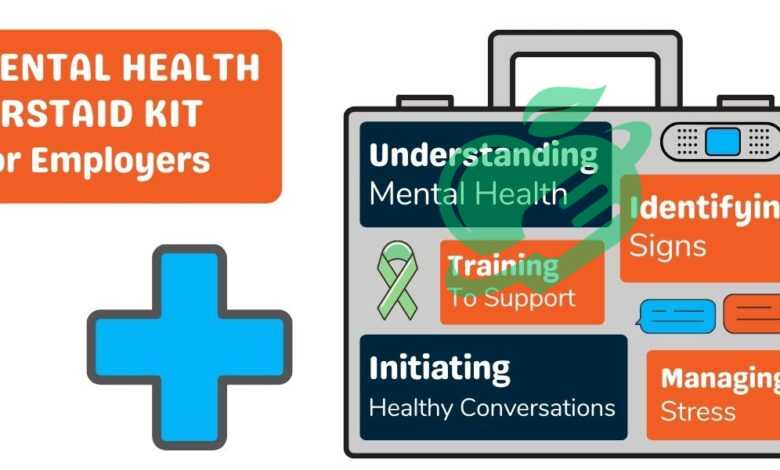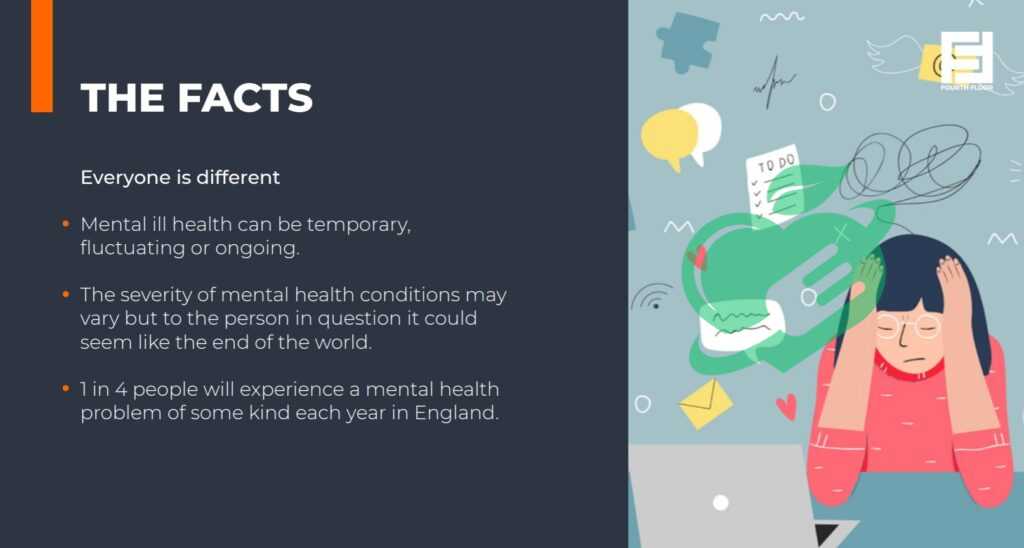Understanding the Importance of Mental Health First Aid

Definition of Mental Health First Aid
Mental Health First Aid (MHFA) is a comprehensive training program designed to teach individuals how to identify, understand, and respond to signs of mental health disorders. This concept is akin to physical first aid, where the initial support stabilizes injured individuals until professional help arrives. In the same way, MHFA empowers everyday people to recognize mental health crises and provide critical assistance. Participants in MHFA learn to:
- Identify common mental health conditions such as depression, anxiety, and substance use disorders.
- Assess the urgency of the situation and determine appropriate interventions.
- Provide support through active listening and empathetic communication.
- Guide individuals toward professional help if necessary.
The goal is not to replace professional mental health services but to equip individuals with the knowledge and skills necessary to act as a supportive bridge. For many, being recognized by someone as going through a tough time can make a world of difference.
Mental health first aid can assist individuals who are experiencing:
- Depression
- Anxiety problems
- Psychosis
- Substance abuse problems
- Eating disorders
- Gambling problems.
It can also be beneficial for someone going through a mental health emergency, including:
- Suicidal thoughts and behaviors
- Non-suicidal self-injury (often referred to as intentional self-harm)
- Panic attacks
- Traumatic events
- Severe psychotic episodes
- Severe effects of alcohol or other drugs
- Aggressive behaviors
Why Mental Health First Aid is Important
The importance of Mental Health First Aid can hardly be overstated. Mental health issues affect millions of people worldwide and can manifest in various ways, often debilitating one’s capacity to function in daily life. Recognizing and responding appropriately to these challenges can significantly influence recovery and support. A Personal Story Consider the example of Sarah, a high school teacher who underwent MHFA training. One day, she noticed that one of her students, Tom, was acting withdrawn, frequently missing classes, and had begun to exhibit signs of distress. Thanks to her training, Sarah recognized these behaviors as potential indicators of a mental health issue. She engaged Tom in a conversation, expressed her concern, and guided him toward the school’s counseling resources. Tom later shared that this small act of understanding and support helped him navigate a dark time and seek professional help.
Here are a few key reasons why Mental Health First Aid is crucial:
- Early Intervention: Timely support can lead to better outcomes, reducing the severity of mental health issues.
- Reducing Stigma: Training changes the narrative surrounding mental health, fostering an environment where it’s okay to talk about struggles.
- Empowerment: Individuals equipped with mental health first aid knowledge feel empowered to help themselves and others, creating a supportive community.
- Emotionally Safer Environments: The presence of trained MHFA responders benefits workplaces, schools, and communities, decreasing crises and bullying behavior.
Key Statistics
- Approximately 1 in 5 adults experience mental illness in a given year.
- Suicide is the second leading cause of death among individuals aged 10-34 years.
- Mental health first aid training has been shown to improve participants’ confidence in providing help by over 90%.
With these statistics in mind, it is clear that there is a pressing need for greater awareness and proactive strategies through Mental Health First Aid. It not only creates informed individuals but builds connections among peers, leading to healthier communities that promote mental well-being. In essence, understanding Mental Health First Aid is the first step toward fostering environments where mental health is prioritized and openly discussed. As Sarah’s story illustrates, anyone could play a pivotal role in someone else’s mental health journey, offering support that might not only change but, in many cases, save a life.
Read also: How Repression Shapes Your Mind and Society

Benefits of Mental Health First Aid Training
The impact of Mental Health First Aid (MHFA) training cannot be overstated. These programs equip individuals with the skills and confidence to identify and respond to mental health crises. This training not only benefits the individual participants but also the wider community, creating a ripple effect of awareness and support. Enhancing Knowledge and Skills One significant benefit of MHFA training is the enhancement of participants’ knowledge and skills. Trainees learn about various mental health conditions, such as depression, anxiety, and psychosis. They also practice effective communication techniques, which can be instrumental in crises. This new understanding helps to mitigate fear and uncertainty surrounding mental health issues.
- Increased Awareness: Participants become more observant of mental health conditions in themselves and others.
- Effective Interventions: Learning practical approaches prepares individuals to engage in conversations about mental health, making them better equipped to respond with empathy.
- Supportive Communities: Trained individuals foster supportive environments, reducing isolation and loneliness, which are common issues for those experiencing mental health challenges.
Promoting Mental Wellness in the Workplace Organizations that prioritize MHFA training reveal profound positive shifts in workplace culture. Employees feel more supported and valued, leading to greater job satisfaction and productivity. Companies can benefit from reduced absenteeism and turnover rates as mental health support is ingrained in the corporate culture. Personal Anecdote Take the case of Kevin, a manager at a tech company who recently attended MHFA training. After gaining insight into mental health challenges, he noticed an employee, Lisa, exhibiting signs of burnout. Rather than just assigning her extra work, he initiated a conversation, offered resources, and even took the time to check in regularly. As a result, Lisa felt supported, ultimately leading to her improved performance and morale at work.
Read also: Mental Health in Nursing: Challenges and Solutions
How TO Can Save Lives
One of the most significant impacts of Mental Health First Aid training is its potential to save lives. In crises where mental health issues escalate, timely intervention can make a dramatic difference. Recognizing Warning Signs Early Training enables individuals to recognize warning signs of mental health crises, such as significant mood changes, withdrawal, or talk of self-harm. By identifying these signs early, responders can act quickly, which is critical in preventing severe outcomes.
- Suicide Prevention: One of the alarming statistics is that suicide rates are soaring, particularly among young adults. MHFA training offers a toolkit to engage someone in distress, encouraging them to seek help.
- Crisis De-escalation: A trained individual can apply de-escalation techniques to diffuse potentially dangerous situations in schools, workplaces, or communities.
Life-Saving Scenarios Consider Emily’s experience, a college student who found herself in a dark place. When her roommate Sarah, a Mental Health First Aider, noticed changes in Emily’s behavior, she initiated a conversation. Through active listening and support, Sarah was able to guide Emily to campus mental health services. This small act of care led Emily to receive the help she so desperately needed, ultimately saving her life. In summary, the impact of Mental Health First Aid training extends far beyond the classroom. The benefits of increased knowledge and skills create healthier communities while directly addressing mental health crises. As proven by personal stories and statistics, MHFA can empower individuals and create life-changing opportunities for those struggling with mental health issues. By continuing to promote and implement these programs, society moves closer to a future where mental health is openly discussed and adequately supported.
Read also: Hemophobia: Overcome the Fear of Blood Today

Mental Health First Aid Steps
Implementing Mental Health First Aid (MHFA) involves a structured approach that enables individuals to provide effective support to someone experiencing a mental health challenge. These steps ensure that responders act appropriately and compassionately in times of crisis. 1. Assess the Situation The first step in providing mental health first aid is to assess the situation. Ask yourself:
- Is the affected person in immediate danger?
- Are there any environmental factors to consider (like location or audience)?
- What resources are available for assistance?
Understanding the context allows responders to gauge the severity of the situation. 2. Listen Non-judgmentally Creating a safe environment is crucial. The value of active listening can’t be overstated. Here is how to engage effectively:
- Offer your full attention and avoid distractions.
- Encourage the person to express their feelings and thoughts without fear of judgment.
- Use open-ended questions to facilitate conversation, such as “How have you been feeling lately?”
3. Give Support and Information Providing empathetic support is essential. It’s important to validate their feelings without trying to provide solutions immediately. You might say:
- “That sounds tough; I’m here for you.”
Offer information about mental health resources that may help, such as counseling services or hotlines. 4. Encourage Professional Help While offering support, it’s vital to encourage the individual to seek professional assistance if their condition requires it. Be gentle but clear, emphasizing the benefits of getting help. Phrases like:
- “I think talking to a professional could be beneficial.”
- “There are people trained to help with what you’re going through.”
5. Follow-Up Once initial support is provided, following up can make a significant difference in the person’s recovery. A simple check-in message or conversation can show that you care and remind them they’re not alone.
Training Programs
As the recognition of the importance of mental health continues to grow, training programs for Mental Health First Aid have become increasingly accessible and important. These programs offer individuals the tools and knowledge needed to intervene effectively and compassionately. Types of Programs Available
- Standard Mental Health First Aid Courses:
- Typically lasts 8 hours and covers the fundamentals of mental health disorders and appropriate interventions.
- Suitable for community members, educators, and workplaces.
- Youth Mental Health First Aid:
- Focuses on the unique mental health challenges faced by adolescents and young adults.
- Important for teachers, coaches, and youth workers.
- Online Training Programs:
- Many organizations have adapted their courses to be delivered virtually, providing greater accessibility.
- Self-paced modules allow individuals to learn at their convenience.
Choosing the Right Training Program When selecting a training program, consider:
- Your Audience: Are you training peers, employees, or community members?
- Goals: What do you aim to achieve through MHFA training?
- Availability and Format: Look for programs that fit your scheduling needs, whether in-person or online.
Personal Experience with Training
Consider the story of Jake, a corporate manager who noticed employee burnout within his team. By attending a Mental Health First Aid training program, he learned how to identify signs of distress and, more importantly, how to approach difficult conversations.
As a result, he implemented monthly wellness check-ins, creating an open dialogue that encouraged employees to express their concerns without fear. In summary, implementing Mental Health First Aid effectively can create a supportive environment where individuals feel empowered to seek help.
By following clear steps and participating in training programs, anyone can become a vital resource within their community.
As we continue to prioritize mental wellness, the value of mental health first aid becomes more apparent, benefiting all individuals involved. The right training can foster compassionate care, making a significant difference in people’s lives.
Motivate someone to reach out for assistance with a mental health issue.
Inquire whether the individual needs assistance in managing their emotions. If they express a desire for help, suggesting that they consult their general practitioner is a beneficial first step. Additionally, you can discuss various choices available to them, particularly local and online resources. Motivate them to take steps towards exploring these alternatives.
If someone is reluctant to accept help, it’s important to understand their reasons. They might have misunderstandings about the process of seeking help or the alternatives available to them. Encourage them to feel more positive about the idea of reaching out for support.
If the individual continues to reject the idea of getting help, let them know that they are welcome to reach out to you if they reconsider. Acknowledge their right to decline assistance, unless you believe they may pose a danger to themselves or others.
Providing mental health first aid to someone contemplating suicide.
- Suicide can be prevented.
- Always regard suicidal thoughts and actions with the utmost seriousness.
- Follow these guidelines when assisting someone who is contemplating suicide:
- If you suspect that someone is contemplating suicide, don’t hesitate to ask them directly.
- If they agree, make sure to stay with them.
Read also: Find Hope at a Leading Mental Health Hospital

Breaking the Stigma through Education
As we embrace the necessity of Mental Health First Aid and effective support systems, it becomes increasingly clear that addressing stigmas surrounding mental health is crucial for progress. Stigma — the negative perceptions and stereotypes associated with mental illness — can be one of the most significant barriers to seeking help. Fortunately, education serves as one of the most effective tools to dismantle these harmful beliefs. Understanding the Roots of Stigma Many times, stigmas arise from misconceptions and lack of knowledge about mental health. These myths can lead to fear, isolation, and self-doubt among individuals experiencing mental health issues. For example, the stigma might suggest that those with anxiety should simply “get over it,” or that depression is a sign of weakness. Educational Initiatives to Combat Stigma
- Public Awareness Campaigns: Initiatives like Mental Health Awareness Month or World Mental Health Day help spark conversations around mental health, providing facts and personal narratives that humanize the experiences.
- Workshops and Training: Educational programs in schools, workplaces, and communities can provide accurate information about mental health, emphasizing that mental illnesses are valid health conditions that can affect anyone.
Personal Anecdote Consider the experience of Maria, a high school student who participated in a mental health awareness campaign at her school. Initially, many of her peers thought mental health issues were signs of weakness or something to be embarrassed about. But after attending informational sessions, Maria took the initiative to organize discussions where students shared their stories. This led to a more informed student body, ultimately reducing misunderstandings and judgments surrounding mental health challenges in her community. Breaking the stigma through education creates a ripple effect, where individuals feel empowered to discuss their mental health openly, thus fostering a culture of acceptance and support.
Importance of Open Communication
In addition to educational efforts, open communication plays a vital role in addressing the stigma surrounding mental health. Encouraging honest discussions about feelings and struggles can create a safe space for those experiencing challenges. Creating Safe Spaces for Conversation
- Encouraging Dialogue: Encouraging individuals to share their feelings without fear of judgment promotes vulnerability and trust. Simple phrases like, “It’s okay to talk about how you’re feeling,” can create an inviting atmosphere.
- Normalizing Mental Health: Regular discussions about mental health, much like physical health, help to normalize the topic. When colleagues or friends share their experiences, it reinforces that seeking help is not only acceptable but essential.
- Utilizing Social Media: Platforms like Instagram and Twitter have become significant spaces for mental health discussions. Advocacy by influencers or public figures can break down barriers and encourage their followers to engage in conversations about mental well-being.
Real-World Impact of Open Communication
Take the example of David, a manager who noticed a decline in his team’s morale. After undergoing Mental Health First Aid training, he prioritized creating an environment focused on open communication.
Weekly “check-ins” became a regular part of team meetings, allowing employees to voice their concerns and share their experiences.
Over time, team cohesion improved, productivity increased, and the atmosphere became one of support encouraged by open dialogues. In summary, addressing the stigmas surrounding mental health through education and open communication is essential for fostering acceptance and understanding.
It is crucial for individuals to feel safe and supported on their journey toward mental wellness. As communities unite to break down barriers, the narrative around mental health shifts, creating an environment where everyone can thrive.
Through these efforts, we can help ensure that mental health is treated with the same importance as physical health—removing stigma and empowering individuals to seek help without fear.
Read also The effects of domestic violence on children’s mental health and psychological behaviors

Creating a Safe and Supportive Environment
As businesses increasingly recognize the significance of mental well-being, creating a safe and supportive workplace environment has become essential. A positive work culture not only enhances employee morale but also boosts productivity and retention. Fostering an Inclusive Atmosphere To foster a workplace where employees feel comfortable discussing mental health, several initiatives can be implemented:
- Promote Open Dialogue: Encourage team members to share their thoughts and feelings without fear of judgment. This can be facilitated through regular check-ins, team-building exercises, or informal gatherings.
- Leadership Training: Equip managers with essential skills to recognize signs of distress and handle sensitive conversations effectively. Leaders should lead by example, demonstrating openness about mental health.
- Mental Health Days: Implement company policies that allow employees to take mental health days off without stigma. This sends a powerful message that mental health is just as important as physical health.
Personal Anecdote Anna, a team leader at a marketing firm, noticed increasing stress levels among her team. After attending a workshop on mental health in the workplace, she decided to implement a “wellness hour” once a week where team members could step away from their tasks and engage in activities that promote mental wellness—like yoga, meditation, or even socializing. The outcome was remarkable. Employees reported feeling more relaxed and connected, and there was a noticeable increase in collaboration and creativity within the team. Creating a safe environment where mental health is openly discussed helps cultivate a sense of belonging. When employees feel valued and understood, they’re far more likely to remain engaged and committed to their work.
Read also: Life After Open Heart Surgery: Tips for a Smooth Recovery
Offering Resources for Mental Health Support
In addition to fostering a supportive environment, providing resources for mental health support is crucial. Employees must have access to the tools and services they need to prioritize their well-being. Types of Resources to Consider
- Employee Assistance Programs (EAPs): Offering EAPs can provide confidential counseling, crisis intervention, and support for various life challenges, including mental health. These programs can be vital for employees facing difficult times.
- Mental Health Training: Providing training programs on mental health awareness, including workshops on managing stress and understanding mental health conditions, can greatly benefit employees. This equips them with the knowledge needed to support themselves and their colleagues.
- Access to Professional Help: Collaborating with mental health professionals to provide on-site counseling services or telehealth options ensures that employees have direct access to support when needed.
- Resource Libraries: Curating a selection of books, articles, or videos on mental health can provide employees with diverse perspectives and coping strategies. Establishing this library in common areas encourages employees to engage with mental health resources.
- Wellness Activities: Organizing group activities, such as workshops on mindfulness, stress management, or creative art sessions, can promote mental well-being while strengthening team bonds.
Real-World Example
Consider a tech start-up that faced high turnover rates due to burnout. After conducting an anonymous survey, they found that employees felt overwhelmed but didn’t know how to address their mental health needs. In response, the company introduced several mental health resources, including dedicated “wellness champions” among staff, who were trained to provide support and guidance.
They also hosted monthly wellness workshops and provided comprehensive benefits that included mental health coverage. Over the next year, employee retention improved significantly, and team morale soared. In conclusion, supporting mental health in the workplace requires intentional efforts both to create a safe environment and to provide accessible resources.
By fostering an open culture where mental health is acknowledged and prioritized, organizations can make substantial strides in ensuring their employees feel supported. The benefits of these initiatives extend beyond individual well-being; they contribute to a thriving, productive work environment where everyone can flourish.
Encouraging mental health conversations, resources, and initiatives sets the foundation for a healthier workplace and ultimately leads to a more resilient workforce.




2 Comments